Flower Glossary is reader-supported. When you buy through links on our site, we may earn an affiliate commission.
Flowers come in all different types of shades, but we happen to love seeing a lot of the colorful flowers as we walk around the neighborhood. Here’s a list of 75 awesome and vibrant colorful flowers with pictures.
Table of Contents
Peonies
 Peonies are bright vibrant perennials that you can enjoy year after year. In fact, if they are taken care of properly they can bloom for up to 100 years!
Peonies are bright vibrant perennials that you can enjoy year after year. In fact, if they are taken care of properly they can bloom for up to 100 years!
- Peonies thrive in a sunny location with well-drained soil
- Many can survive a zone 2 winter (temperatures of -50 degrees F)
- Peonies can take up to 3 years before they actually start to bloom
Anemone
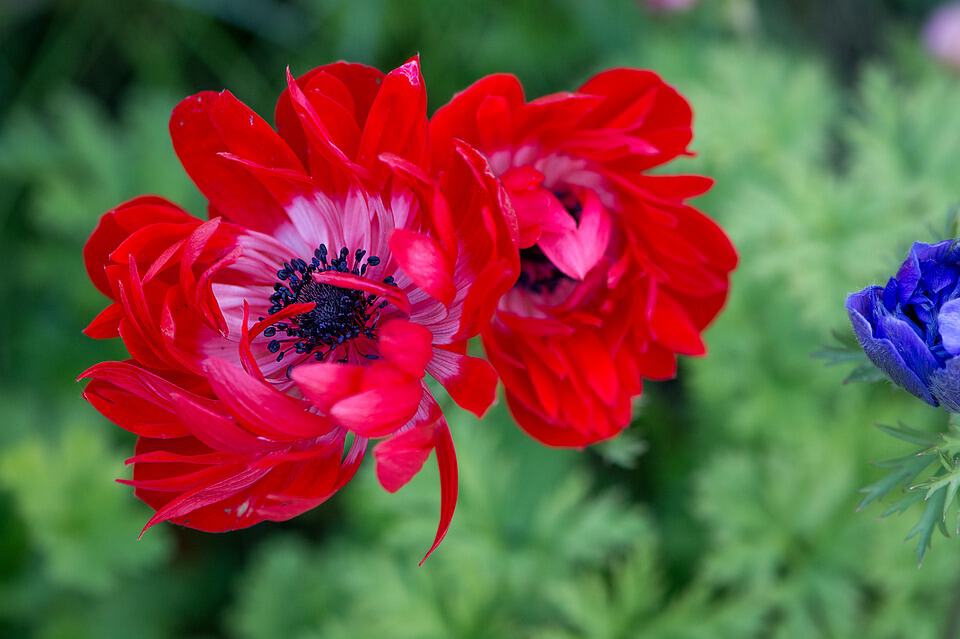 Anemone flowers have over 120 species in a wide range of spectacular colors. They also have both spring and fall-blooming varieties.
Anemone flowers have over 120 species in a wide range of spectacular colors. They also have both spring and fall-blooming varieties.
- Plant in full to partial sun
- Rich and well-drained soil
- You should allow the soil to dry between waterings
- Fertilize monthly with general purpose fertilizer
French Marigold
 The French Marigold can be a stunning addition to any garden. You can often find them planted in vegetable patches to fight nematodes and aphids.
The French Marigold can be a stunning addition to any garden. You can often find them planted in vegetable patches to fight nematodes and aphids.
- Plant in full sun
- Well-drained soil
- They can grow 6 to 18 inches
Surfinia
 Surfinia is a kind of hanging petunia with small bell-shaped flowers. They come in a variety of colors including lavender, pink, red, white, and more.
Surfinia is a kind of hanging petunia with small bell-shaped flowers. They come in a variety of colors including lavender, pink, red, white, and more.
- Full to partial sun
- Rich soil
- Plant in spring after any risk of freeze
- They will bloom from May to October
Lantana

Lantana is beautiful flowers that are drought tolerant and long blooming. They also attract butterflies and come in a variety of colors and sometimes the colors are even mixed together.
- They are winter hardy to zone 8
- Well-draining and slightly acidic soil
- Full sun
- Once grown an inch of water per week is ideal
Dahlia

Dahlia’s are colorful and spiky daisy-like flowers. The will bloom from the middle of summer to the first frost.
- Full sun
- Rich and well-drained soil
- They grow best when they are grown in rows of their own
Coleus

Coleus plants have some of the most beautiful foliage you will find in nature. You can find them in combinations of yellow, pink, maroon, red, green, and more.
- Hardy to Zone 10
- Full sun to partial shade
- Average, moist, and well-drained soil
Canna Lily

The Canna Lily has large colorful banana-like leaves. They come in a variety of colors from orange, yellow, cream, pink, and red.
- Can be planted in Zones 7 and warmer
- Fertile moist soil
- Prefers full sun but can tolerate partial shade
Sweet Pea

The Sweet Pea flower has a beautiful scent and will bring stunning colors to your garden.
- Can grow in Zone 7 or colder
- Cool-moist soil
- Full sun to partial shade
Lavender
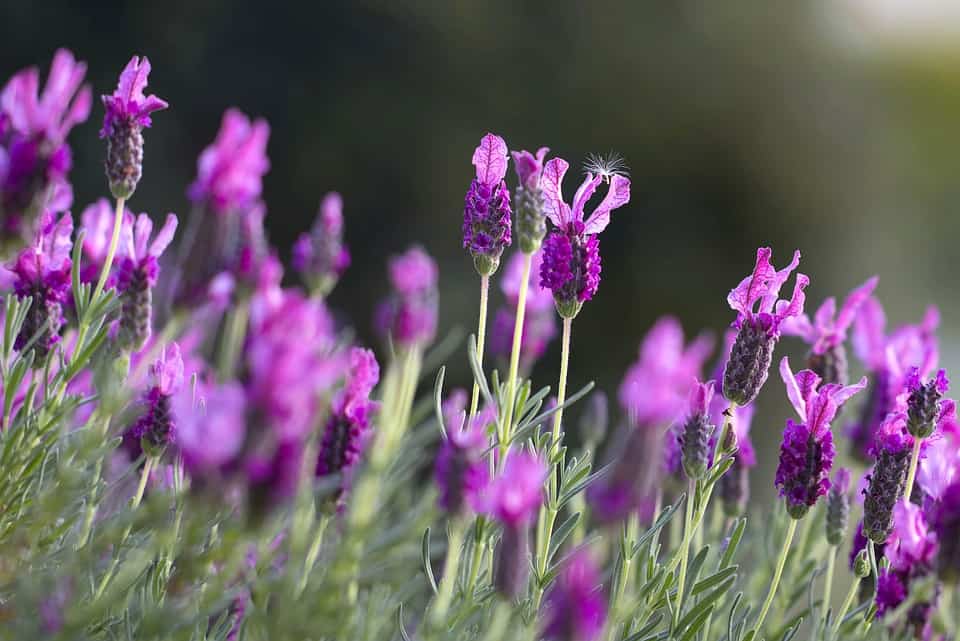
Lavender will not only bring color to your garden but a sweet calming fragrance as well. They are also great at repelling mosquitoes and flies in your garden.
- Most are hardy in Zones 5-9, depending on the species
- Full sun
- Well-drained soil
Dianthus
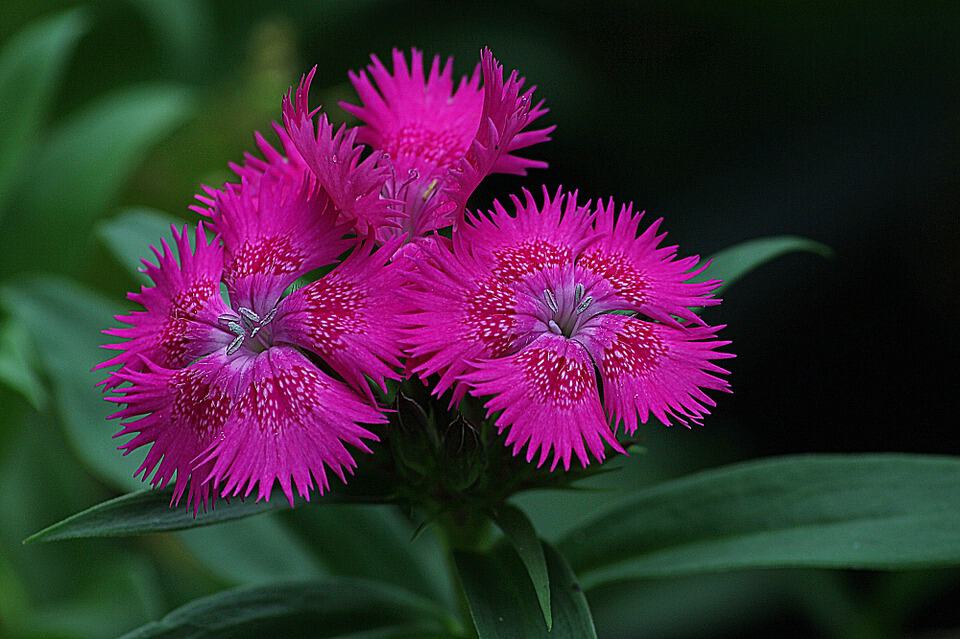
The Dianthus flower features large and bright colored fringed flower heads on top of strong stems. They come in a variety of colors such as white, lilac, red, and pink.
- Full sun
- Rich and well-drained soil
- Hardiness Zones: 3-9
Sunflower

The sunflower will bring light and beauty to any garden. They can actually grow as many as two thousand miniature flowers forming at its central disc. Learn more about how to grow sunflowers on our other post.
- Full sun
- Well-drained soil
- Wind can severely damage these flowers so you should stake them during windy weather
Penstemon

There are about 275 species of the Penstemon flower native to North America. They will also attract butterflies and hummingbirds to your garden.
- Hardy to Zones 4-10 depending on the variety
- Well-drained soil
- Full sun
Sedum

The Sedum is a perennial plant with star-shaped flowers. They also have thick succulent leaves with fleshy stems.
- Well-drained, average to rich soil
- Full sun but can tolerate partial shade
- Space plants around 6 inches to 2 feet apart
Beebalm

The Bee Balm is a perennial flower that blooms in pink, purple, red, or white. They also have a beautiful fragrance to them.
- Plant in spring or fall
- Full sunshine
- Moist soil
Clematis

Clematis are very popular flowering vines that are grown in home landscapes. They come in a variety of species and colors.
- Rich and well-draining soil
- Water about an inch or so weekly
- Plant in fall or early spring
Zinnia

Zinnias are annual flowers that have bright daisy-like flower heads. They also are great food for butterflies.
- Plant after the last chance of frost has passed
- They can stand a minimum daytime temperature of around 60 degrees F
- Rich organic and well-drained soil
Begonia

The Begonia is an annual flower and is deer resistant. They come in a variety of colors from orange, yellow, red, pink, and more.
- Sun to shade, depending on the variety
- Most varieties are hardy to zones 9-11
- Evenly moist and well-draining soil
Honeysuckle

Commonly known for its lovely fragrance the honeysuckle is also a beautiful addition to any garden. There are over 180 varieties of the honeysuckle and they will surely draw wildlife into your garden.
- Full sun but can tolerate some shade
- Well-draining soil with organic matter
- Grow best with support (such as a trellis or fence)
Celosia

The Celosia is an annual plant whose flowers resemble a rooster’s head. Due to this, they are also known as cockscomb.
- They prefer warmer temperatures and are hardy to zones 9-11
- The more sun the better
- They benefit from a thick layer of organic mulch
Aster

Asters are daisy-like perennials. They also have starry-shaped flower heads.
- Full to partial sun
- Moist and well-drained soil that is loamy
- Plant mid to late spring
Bluebell

Bluebell flowers are perennials that come in colors ranging from deep purple to pinks as well as white and blues. They are also known as Wood Hyacinths.
- Partial sun to partial shade (they grow better out of direct sunlight)
- Humus-rich, moist and well-drained soil
- They grow best when planted in shady areas like around trees or underneath shrubs
Anthurium

Anthurium is native to tropical America and have a genus of more than 800 species. They are also known as the Flamingo Flower, Painted Tongue, or Tail Flower.
- Highly organic soil with good water retention
- You should stake them after planting for support
- Use peat moss as a base
- Need strong light but not direct sunlight
Blanket Flower

The blanket flower is a perennial blanket flower. Their stems can reach 1 to 3 feet and will bloom from early summer until the first frost arrives. They will also attract butterflies to your garden.
- Full sun
- Well-draining soil
- Once established they can tolerate extreme drought conditions
- Water once or twice a week
Hibiscus

Hibiscus flowers are tropical shrubs that are known for their colorful and large blooms. They grow best in warmer temperatures and will not survive any frost. They will also attract butterflies and hummingbirds to your garden.
- Keep soil moist but not soggy (overwatering can cause root rot)
- Give them warm water over cold water (water should be around 95 degrees)
- Full sun to partial shade
Orchid

Unlike many other flowers, Orchids do not grow in the dirt but by hanging on to the bark of trees. Some orchids (such as the lady slippers) grow in the loamy soil of a jungle floor.
- Full sun to partial shade
- Well-drained soil
- Do not over-water
Amaryllis

The Amaryllis can actually completely die out and then grow back as a flower. Most varieties of this flower will begin blooming six to eight weeks after planting and some can take up to ten weeks.
- Bright light with some sun throughout the day
- Moist soil
- Reduce watering during the fall
Azalea
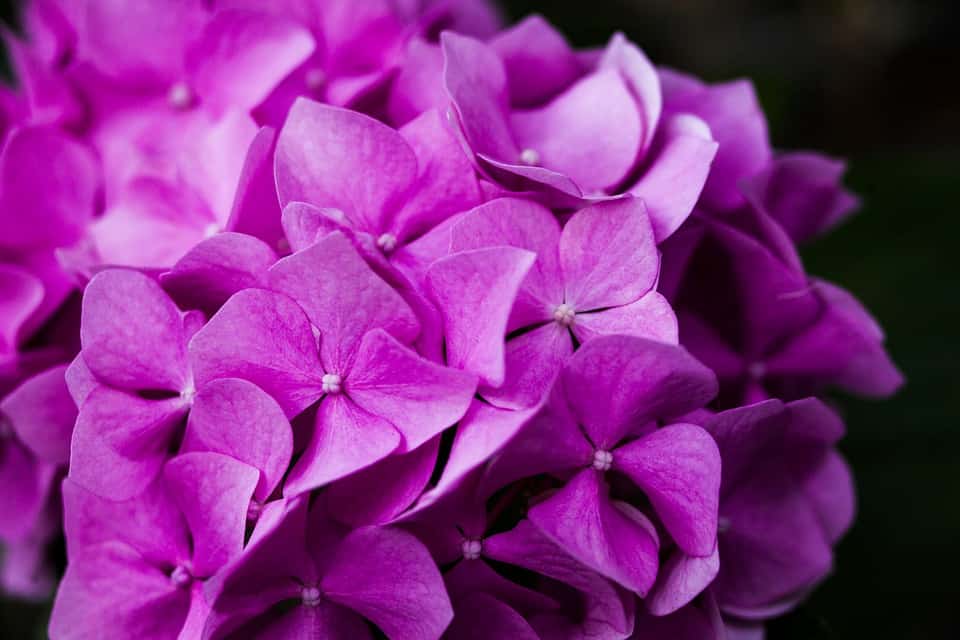
Azaleas are known as “The Royalty of the Garden.” They grow in a variety of colors and also can represent love and femininity.
- Full sun
- Well-drained, humus-rich soil
- You should mulch well (pine needles, aged oak, and hemlock sawdust will help to keep the soil moist and acidic)
- Deciduous varieties can grow as far north as Zone 4
- Bright-pink rose shell azalea are hardy in Zone 3
- Most of the evergreen azaleas are reliable in Zone 6
Crocus

The crocus is one of the most popular blooms in early spring. They are often referred to as the “Lightbulb Flower” due to their shape when they are fully bloomed.
- They live cold to moderate winter conditions and are hardy to climate zones 3 to 7 (They won’t grow in hot climates)
- Partial sun
- Well-drained soil
- They can attract deer and squirrels
Freesia

Freesias come in a variety of colors such as red, orange, white, yellow, pink, lavender, as well as some bi-colored. They will also bring a sweet fragrance to your garden and also make beautiful cut flowers for inside your home.
- Full sun to light shade
- Well-drained and moist soil
- After planting, water well and thoroughly soak the area
Allium

The beautiful Allium plant is actually related to the garden onion. Because of their shape, they are also often seen in bouquets.
- Full sun
- Rich, fertile, and well-drained soil
- Pinch the flowers when they start to wilt
Daffodil

The beautiful and bright yellow blooms of the daffodils are a sign that spring is coming. They are a perennial that grows in most regions of North America besides some of the hottest and wettest areas (for example South Florida).
- Full sun to partial shade
- Grow best in moderately fertile and well-drained soil
- Can tolerate some crowding but prefer to be spaced around 3 to 6 inches apart
Hyacinth

Hyacinths grow in a variety of colors from soft blue to bright pink. They also will bring a lovely strong fragrance to your garden.
- Plant in the fall before the first frost
- They are hardy to zone 4
- Well-drained and moderately fertile soil
- Full sun or partial shade
Iris

There are around 300 species of the genus Iris and they come in a variety of colors. They have stunning six-petal flowers and three outer hanging petals with three inner upright petals.
- Full sun
- The bearded iris should not be shaded out by other plants and most do best in a bed of their own
- Fertile, neutral and slightly acidic soil
Cherry Blossom

The name Cherry Blossom comes from the soft and beautiful blossoms they produce. The Cherry Blossom comes in a range of colors from creamy white to hot pink.
- Full sun to partial shade
- Grow best in USDA hardiness zones 5 through 8
- Rich, deep, moist and well-draining soil
Poppy
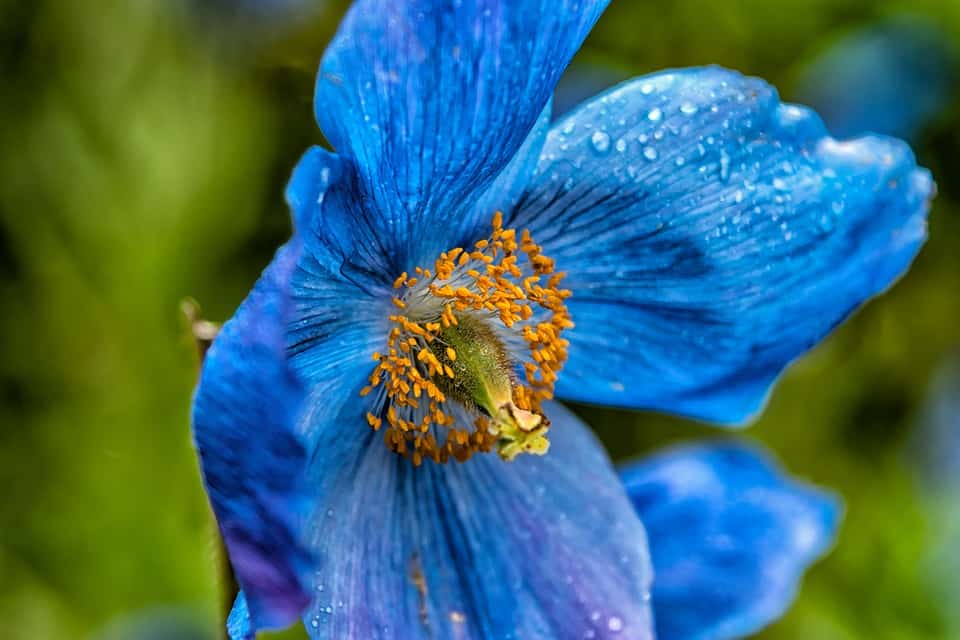
The poppy flower produces open flowers that come in a variety of colors from blue, pale pink, to crimson red. Perennial varieties of the poppy are typically hardy to zones 5 through 9.
- Do not over water
- Full sun
- Well-drained soil
- At the end of summer, you can cut the stems back
Rose

Roses are probably one of the most popular flowers for their variety of colors and beauty. A rose bush can come in a variety of forms, from miniature rose plants to climbing roses.
- Needs a minimum of 5 to 6 hours of full sun per day (morning sun is the most important so the leaves dry out to prevent diseases)
- Well-draining loose and loamy soil
- Make sure not to crowd your bushes if you plan on planting more thane one
Chrysanthemum

Chrysanthemum can grow in pretty much every color (such as blue, orange, red, white, yellow, and lavender). Established plants are hardy to zones 5 through 9.
- Need 5 or more hours of direct sun each day
- Well-drained soil and should add about 2 inches of mulch to conserve moisture
- Pinch off dead flowers as they wilt to extend the bloom time
Magnolia

The Magnolia tree has stunning white blossoms with dark green leaves. They have an exotic-looking pod that opens in the fall time to reveal bright red-orange berries. These stunning flowers will attract birds and other wildlife to your garden.
- Moist, rich, and slightly acidic soil (keep the soil around the base moist)
- Fertilize with a slow-release fertilizer in the spring
- Most magnolias are hardy in zones 7 through 9
Astrantia

This plant is popular among English Gardens and the flowers were used in medieval medicine as purgatives or diuretics. They will also attract butterflies and bees to your garden.
- Partial shade
- Rich, moist, and slightly acidic soil
- Fertilize in spring and the middle of summer
Bachelor Button

The Bachelor’s Button (also known as the cornflower) grows as a hardy annual flower. They will bloom from late spring through the late summer time.
- Full sun
- Water about once weekly
- Add about a 2-inch layer of mulch to help retain water
Balloon Flower

The balloon flower gets its name from the unopened buds which will swell up and resemble that of a hot-air balloon. If you squeeze the sides they will burst open and make a soft popping sound like a balloon.
- They are hardy to zones 3-8
- Sun to partial shade
- Well-drained and slightly acidic soil
Candytuft

Candytuft (also known as Iberis) is a perennial that is commonly used as edging along pathways. They grow usually in white or pink blooms.
- Hardy to zones 4 to 8
- Full sun to partial shade
- Well-drained soil with the pH on the alkaline side
Creeping Phlox

The Creeping Phlox is a perennial ground covering flower that displays a thick blanket of blooms in vibrant shades of bluish purple, pink, white and lavender. It can also grow between rocks or cascade over a wall.
- Full sun to partial shade
- Hardy to zones 3B through 10
- Once established they are drought-tolerant and only require watering during warm and dry weather
Desert Rose

The Desert Rose is part of the Adenium family. They are hardy to zones 10 and 11.
- Full sun
- Well-drained soil (a mixture of cactus soil with gritty sand works great)
- Fertilize once a month with a dilution of half of a 20-20-20 liquid plant food (do not feed during the winter)
Echinacea

Echinacea (Also known as the Coneflower) are perennials that bloom from early summer until frost. They will attract butterflies and goldfinches to your garden.
- Full sun but will tolerate light shade
- Sandy and well-drained loam soil
- Plant in early fall in colder zones (Zones 5 and lower)
Echium Wildpretii

Echium Wildpretii (Also known as the tower-of-jewels) can stand nearly seven feet tall. They have beautiful pink flowers with silver foliage and prominent anthers that seem to sparkle as sunlight hits them.
- Sandy to gritty cactus soil
- Full sun with protection from wind
- They can survive temperatures below 20 F if given protection
Forget-Me-Not
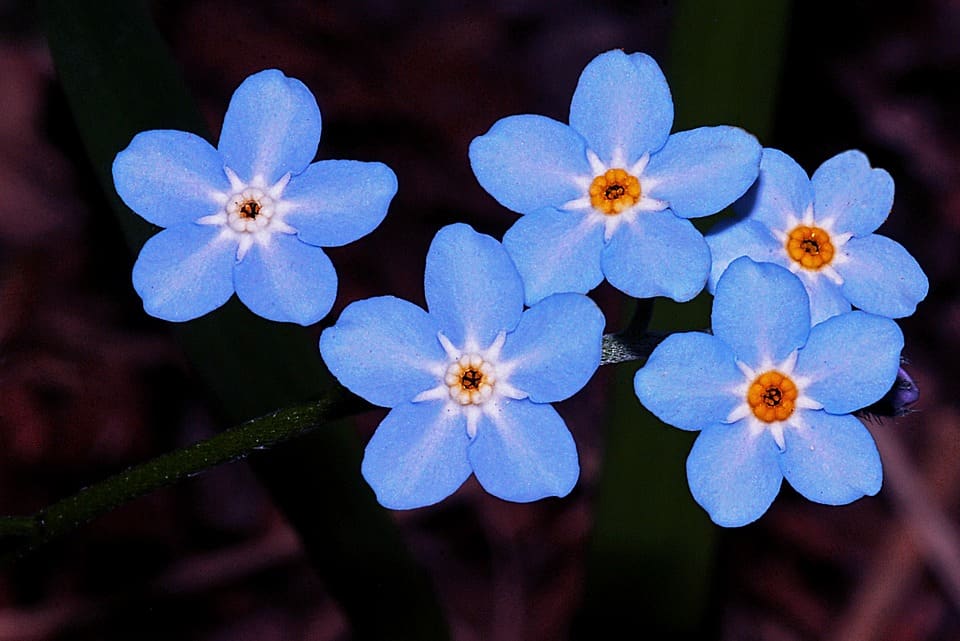
The Forget-Me-Not flower is a perennial flower that have five petals with blue blooms and yellow centers (they can also grow with pink petals). You will typically see these colorful flowers growing in May through October.
- Grow best near streams, ponds, and marshes
- Hardy to zones 5 through 9
- Full sun to partial shade
Foxglove

The Foxglove is known for its tower like blooms that resemble glove-like bells. Be careful when planting this colorful plant as they are highly poisonous.
- Full sun to partial sun
- Hardy to zones 3 through 8
- They can grow in a variety of colors: Purple, orange, white, pink, and yellow
Frangipani

Frangipani is a small tree that represents a tropical appearance. These fragrant flowers can grow in numerous colors such as white with a yellow center, vibrant pink, yellow, pink-orange-yellow mixes, and dark shades of mahogany-red.
- Full sun
- Protect from winds
- Free-draining to sandy soil (add organic matter to the soil)
Fuschia Flower
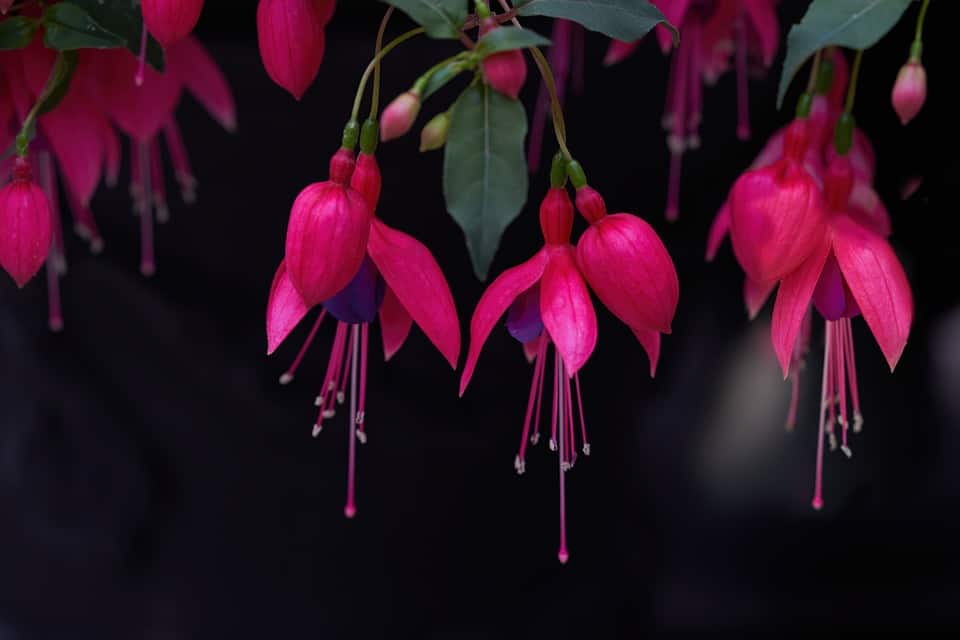
Fuschia Flower is an exotic two-toned flower. They are great for your garden but they actually grow best in hanging baskets.
- Half shade
- Will not tolerate frost
- Rich and cool soil
Gladiolus

Gladiolus is a perennial flower known for its tall flower spikes. They can grow between 2 to 5 feet tall and the larger varieties should be staked. In zone 7 and cooler they need to be lifted in the fall and replanted in the spring.
- Full sun
- Well-drained soil
- Hardy to zones 6 through 10
Helenium
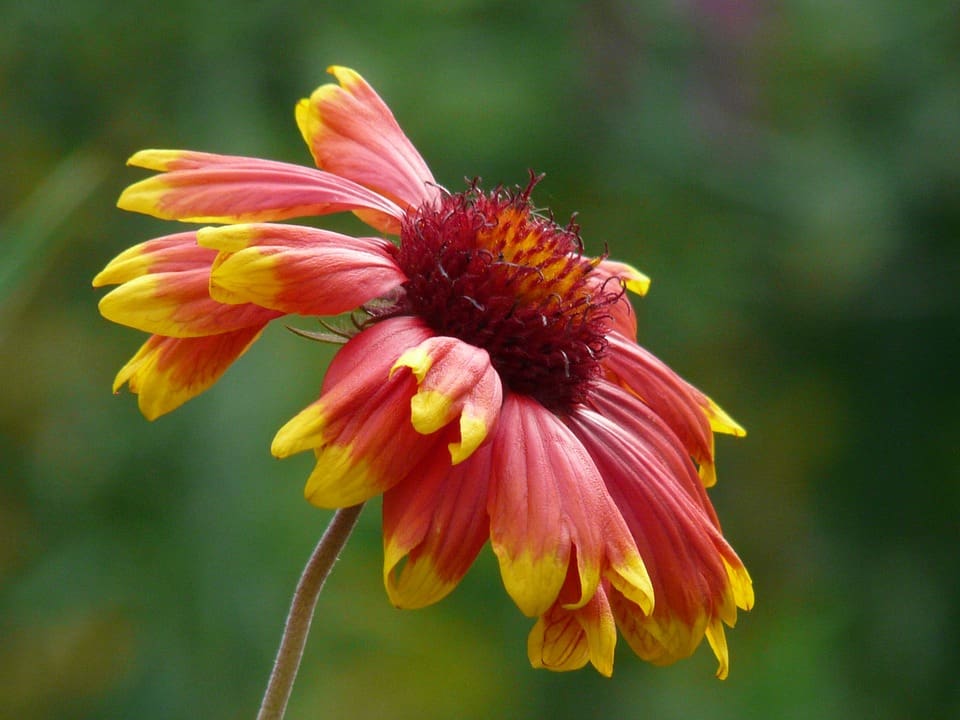
The Helenium will bring bright beautiful colors to your garden. Also known as the sneezeweed, the Helenium can grow 3 to 4 feet tall and will attract birds and butterflies to your garden.
- Hardy from zones 3 through 8
- Prefers 6 to 8 hours of direct sunlight daily
- They are not fussy when it comes to soil and can tolerate periods of drought
- Not intended for human or animal consumption
Hellebore
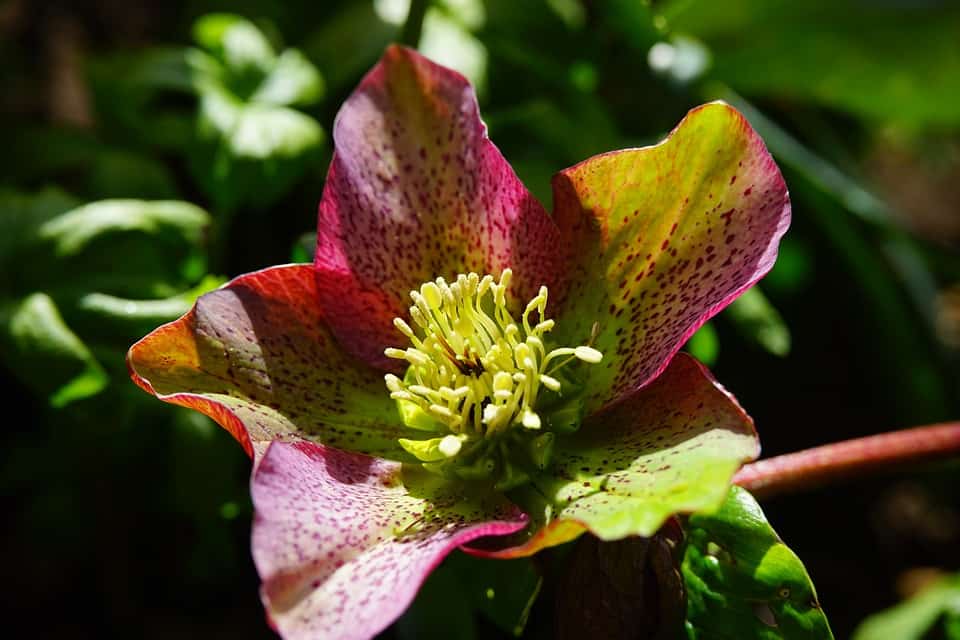
Hellebore (Also known as the Christmas Rose or the Lenten Rose) appear in early spring around the time of Lent.
- Partial shade
- Rich, moist, and well-draining soil
- Hardy to zones 4-9 (Evergreen 6-9)
Hydrangea

Hydrangea are large beautiful globe shaped flowers that will cover their shrubs in the summer and spring. You can find them growing in hardiness Zones 3 to 7 as perennials.
- Full sun to partial shade
- They don’t like hot conditions so afternoon shade is best
- Rich, moist, well-draining soil
Ice Plant

The Ice Plant is a cold-hardy succulent that comes from Africa. They come in a variety of colors such as yellow, bi-color, purple, scarlet, and orange.
- In hardiness zones 6-8 they can grow as a perennial garden plant
- In zones 4 and 5 due to the cold and wet climates they grow as an annual
- Full sun
- Sandy, Sandy loam or gravelly well-drained soil (avoid clay type soil)
Morning Glory

The Morning Glory is a popular annual vine that can grow up a fence, trellis, or archway. They come in a variety of colors such as blue, pink, purple, white, and more. They will also attract hummingbirds to your garden.
- Full sun
- Well-drained soil
Kangaroo Paw

The Kangaroo Paw is one of the more interesting looking flowers out there and it definitely resembles a kangaroo paw. The bloom color is influenced by the fine hairs that surround the flower and can range from orange and red to black and yellow.
- They require being grown indoors or a climate in Zone 9
- Well-drained slightly acidic soil
- Full sun
Knautia Macedonica

Knautia Macedonica is a long blooming perennial and display large amounts of dark pink to almost red pin-cushion looking blooms. They should not be planted alone and should be planted in groups of Knautias.
- Well-drained soil
- Full sun
- Will attract butterflies to your garden
Lotus

The Lotus flower represents beauty, majesty, grace, fertility, purity, beauty, wealth, richness, knowledge, and serenity. It is also a sacred flower for Buddhists.
- Full sun
- Hardy to zones 4-10 if wintered over correctly
- Protect from the wind
Nigella

The Nigella (Also known as Love-In-A-Mist) can reach 15 to 24 inches in height and up to a foot in width. These colorful annual flowers will bloom in early spring if they are planted in the fall.
- Full sun to partial shade
- Well-drained soil
- Hardy to zones 2 through 11
Passion Flower

The Passionflower is an exotic looking perennial flower that is adapted to zones 6 through 10. Some Passion Flowers even produce edible fruits.
- Full sun with afternoon shade
- Well-drained soil
- Fertilize in spring and the middle of summer
- Adding mulch will keep the soil moist and can protect the roots in winter
Petunia

Petunias are one of the most popular annual flowers however, they are perennials in zones 9 to 11. There are two different groups of Petunias called the Grandiflora and the Multiflora.
- Full sun
- Well-draining, clay or sandy soil
- They can grow in pink, purple, yellow, and other various colors
Quince

The Quince flower grows in a variety of colors such as pink, salmon, white, and red. They are hardy to zones 4 through 10.
- Full sun
- Loamy soil that is slightly acidic to neutral
- They can grow 6 to 10 feet tall
Tithonia

Tithonia (Also known as the Mexican Sunflower) includes about 10-15 species. They can grow around 4-6 feet tall. They will also attract butterflies, hummingbirds, and bees to your garden.
- Full sun
- Poor to average well drained soil
- Shelter from strong winds
Tropaeolum

Tropaeolum (Also known as the Nasturtium) is an edible plant that was actually selected “herb of the year 2013.” They can grow in yellow, orange, and red.
- Full sun
- Heavy clay soil
- Water in early morning and late afternoon (be careful not to over water)
Aechmea
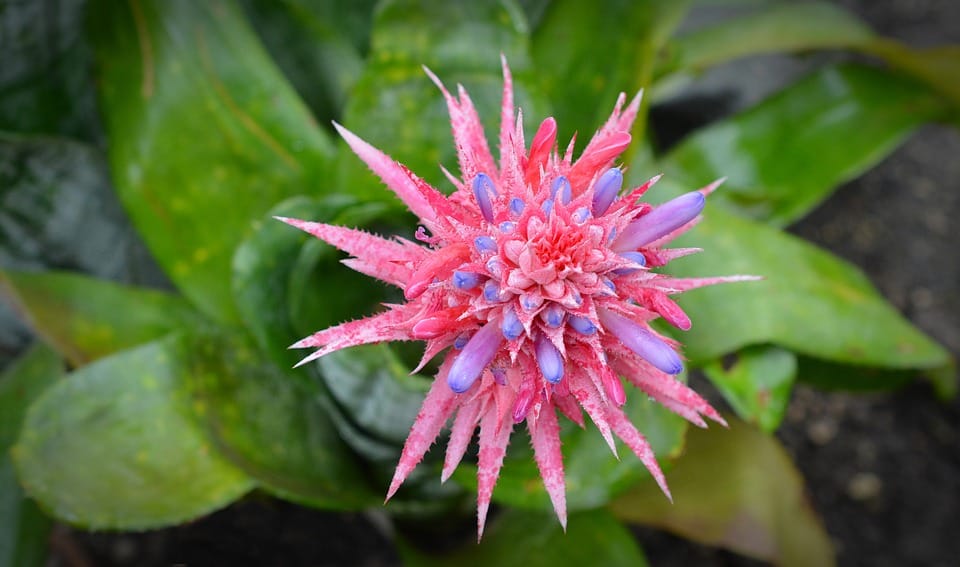
Aechmea (Also known as the Urn Plant) is a tropical beauty and also makes a great houseplant. They are hardy to zones 10 through 13.
- Well-drained soil
- Sun to partial shade
- Use liquid fertilizer during the summer
Hoya Wax Flower
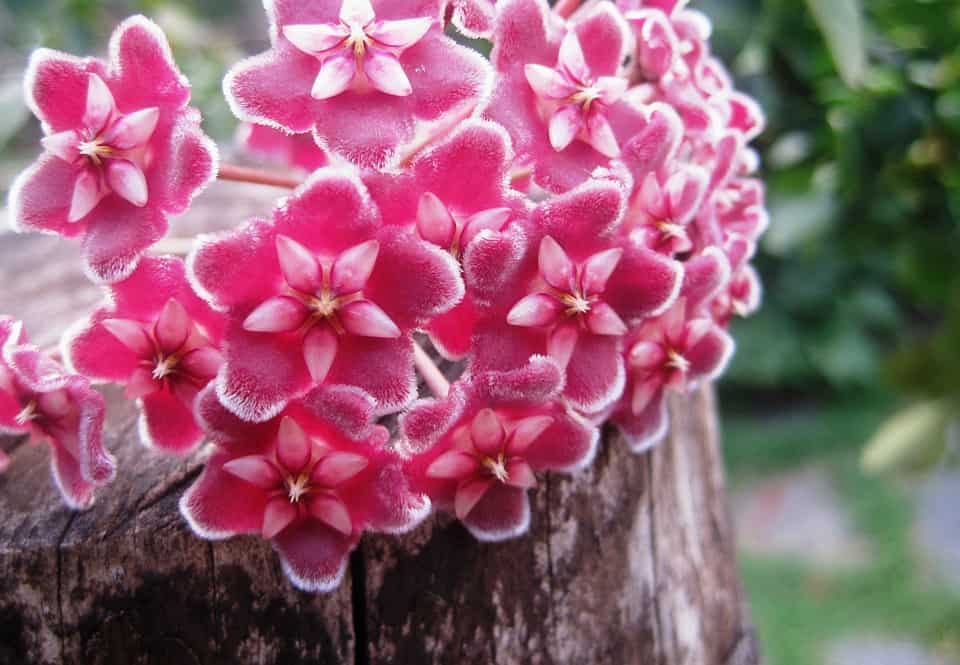
The Hoya Wax Flower is native to Southern India. This is a tropical plant and grows best indoors but will grow well in warmer climates.
- Bright indirect sunlight to avoid the leaves burning
- Moist soil
- Water frequently to keep soil moist
- Optimal temperature is 80 degrees during the day and 65 degrees at night
Weigela

The Weigela is a colorful shrub that will add color to your garden for most of the year.
- Full sun
- Well-drained soil
- Fertilize about once a year with regular, balanced plant food
Helichrysum Strawflower

The Helichrysum Strawflower will bring vivid colors to your garden. They resemble daisies but their petals are more stiff and papery.
- Full sun to partial shade
- Well-drained soil
- Hardy to zones 8 to 10
Bergenia

The Bergenia is also known as Pigsqueak or the Elephant’s ears. The flowers change from green to red or bronze in cooler months.
- Full sun to partial shade
- Damp soil
- Hardy to zones 3-8
Cardinal Flower

The Cardinal flower has deep scarlet red blooms and can grow up to 4 feet tall. They will also attract butterflies to your garden.
- Partial shade
- Damp Soil
- Hardy to zones 2-9
Gazania
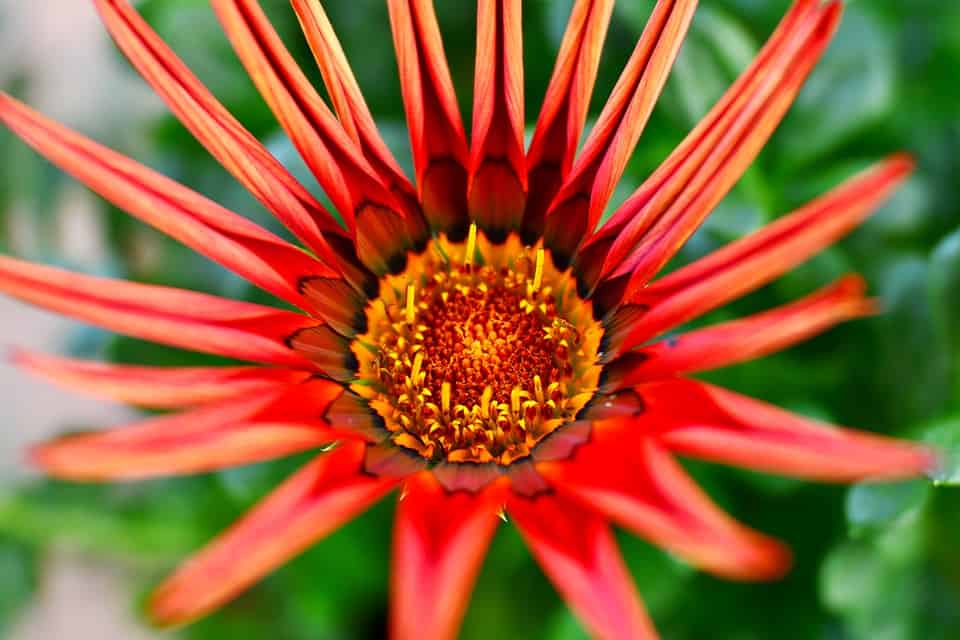 The Gazania is a large daisy like flower that is super colorful and vibrant. It will also attract butterflies to your garden.
The Gazania is a large daisy like flower that is super colorful and vibrant. It will also attract butterflies to your garden.
- Full sun
- Well-drained soil
- Hardy to zones 8 – 10
Globe Thistle
 The Globe Thistle is a stunning and vibrant spherical flowerhead. It comes in shades of blue and violet and will attract butterflies and bees to your garden.
The Globe Thistle is a stunning and vibrant spherical flowerhead. It comes in shades of blue and violet and will attract butterflies and bees to your garden.
- Full sun
- Well-drained soil
- Hardy to zones 3-9
Alstroemeria
 The Alstroemeria is a common flower that is often found in floral arrangements. The petals also have the ability to be dyed.
The Alstroemeria is a common flower that is often found in floral arrangements. The petals also have the ability to be dyed.
- Full sun to partial shade
- Well-drained soil
- Blooms in early spring to late summer
If you enjoyed this post, you may love our tropical flowers article and this pinterest board featuring other colorful flowers.
